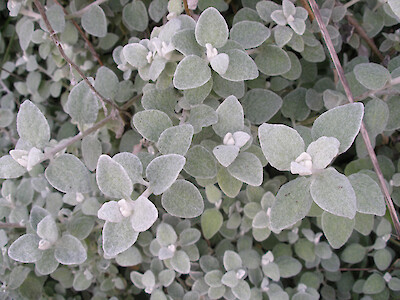Helichrysum petiolare or Licorice Plant

I have chosen this plant to be Pest of the Month because it is a new addition to the list and just starting to show signs of becoming established in Pāuatahanui.
Predominantly grown as a garden plant it has “escaped” and we now see it growing wild along the side of the local roads, for example, along Flightys Road and SH58 between Murphys and Belmont Roads
“Helichrysum petiolare is a native plant of South Africa, but the species has become naturalized in many countries. In New Zealand, this species is registered as a weed. The Department of Conservation (DOC) has concerns with Helichrysum petiolare on the Chatham Islands as it has expanded into nearby indigenous habitats displacing native plants. It is also monitored by Biosecurity New Zealand in the Chatham Is. It reproduces by seed and vegetatively from stem fragments and can grow to form dense stands that crowd out native plants.
It is a herbaceous perennial, a trailing or mound-forming evergreen shrub growing to 50 cm tall by 2 m or more, with woolly grey-green heart-shaped leaves and dull white flowerheads in late summer is a perennial mound-forming shrub.”1
Methods of Control
Spray:

-
Glyphosate and metsulfuron e.g. Roundup or Associate October-May
-
Picloram and Triclopyr e.g. Tordon or Weed Weapon Tough Brushweed Ultra November-May 2
As it can be growing over native plants sometimes hand removal is the best/only option.
References
3. https://www.nzpcn.org.nz/flora/species/helichrysum-petiolare/
Note: If you are searching you may come across another plant with a similar name called Licorice weed (Scoparia dulcis) so check the scientific name
